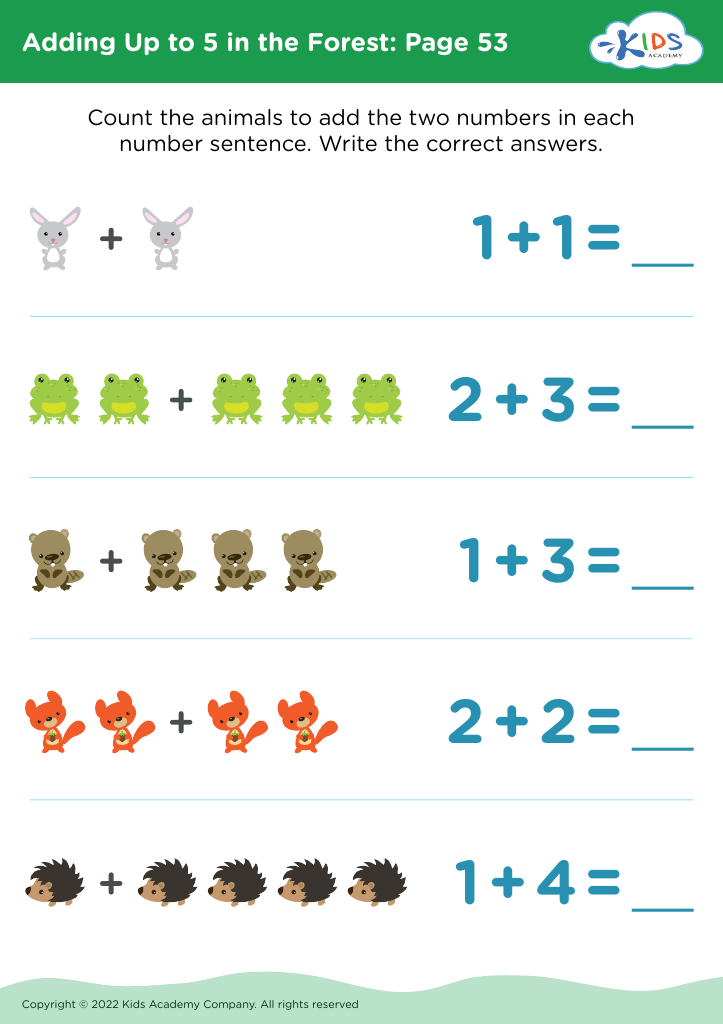Visual comprehension Math Worksheets for Ages 5-9
7 filtered results
-
From - To
Unlock your child's mathematical potential with our Visual Comprehension Math Worksheets for ages 5-9. Designed to blend fun and learning, these worksheets feature visually engaging exercises that develop essential math skills like pattern recognition, counting, sorting, and basic arithmetic. Each activity encourages critical thinking and problem-solving in young learners, making math an exciting adventure. With colorful illustrations and age-appropriate challenges, our worksheets ensure that children gain confidence and a solid understanding of fundamental math concepts. Perfect for home or school use, these resources help build a strong foundation for future academic success. Explore and download today for hours of educational fun!
Visual comprehension in math is crucial for children ages 5-9 because it lays the foundation for their understanding of mathematical concepts and problem-solving skills. At this age, young learners are highly visual and learn best through images, shapes, and spatial understanding. By integrating visual tools like charts, graphs, and pictorial representations, teachers and parents can make abstract mathematical ideas more concrete and relatable for children.
For example, when learning to add or subtract, colorful objects like counting bears or blocks help children grasp the concept by physically manipulating the items. This hands-on experience boosts their retention and deepens their understanding. Visual aids also cater to different learning styles and can make math more engaging and less intimidating for young learners.
Moreover, visual comprehension aids in developing critical thinking and logical skills. By interpreting visual data, children learn to recognize patterns, make connections, and solve problems efficiently. These skills are not only essential for math but are fundamental for lifelong learning and everyday decision-making.
Therefore, fostering visual comprehension in math for young learners sets a strong mathematical foundation, encourages a positive attitude towards the subject, and equips children with the necessary skills to navigate more complex math concepts in the future.



























